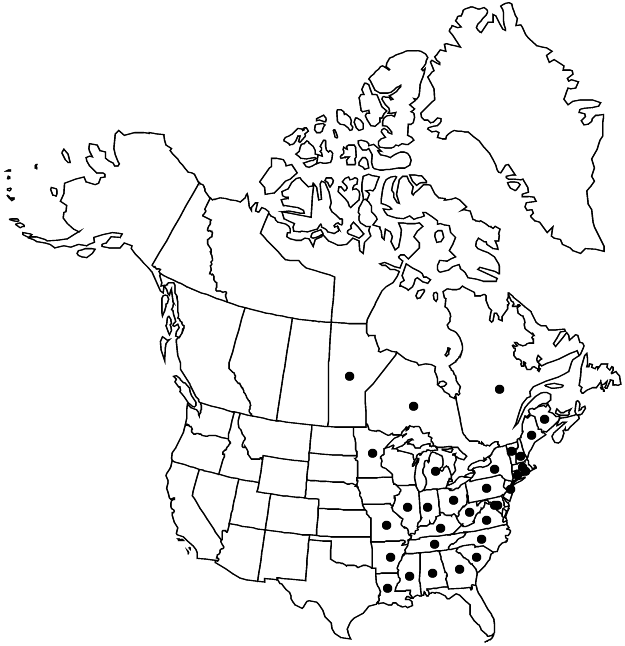Micranthes virginiensis
Fl. S.E. U.S., 501. 1903 ,.
Plants solitary or in clumps, with bulbils on caudices. Leaves basal; petiole flattened, 1–9 cm; blade ovate to elliptic, 2–8 cm, ± fleshy, base attenuate, margins irregularly crenate to serrate, ciliate, surfaces sparsely to ± densely stipitate-glandular and tangled, reddish brown-hairy, adaxially glabrescent. Inflorescences 30+-flowered, (flowers sometimes secund), very open, lax, ± flat-topped thyrses, 6–50 cm, proximally hairy, distally densely purple-tipped stipitate-glandular. Flowers: sepals erect to ascending (even in fruit), ovate to triangular; petals white, not spotted, broadly oblong to elliptic, not or rarely slightly clawed, 3–6 mm, 2+ times as long as sepals; filaments linear, flattened; pistils distinct almost to base; ovary ± superior, (to 1/3 adnate hypanthium). Capsules green to purplish, folliclelike. 2n = 20 (+ 0–6 supernumeraries), 38.
Phenology: Flowering spring.
Habitat: Rocky hillsides, cliffs and shaded rock outcrops, stream banks, wooded slopes
Elevation: 0-1500 m
Distribution

Man., N.B., Ont., Que., Ala., Ark., Conn., D.C., Ga., Ill., Ind., Ky., La., Maine, Md., Mass., Mich., Minn., Miss., Mo., N.H., N.J., N.Y., N.C., Ohio, Pa., R.I., S.C., Tenn., Vt., Va., W.Va.
Discussion
Also reported for Micranthes virginiensis is 2n = 28; D. E. Soltis (1983) documented zero to six supernumerary chromosomes in this species and speculated that this report may have included eight supernumeraries.
Selected References
None.
